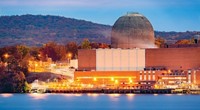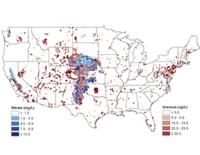Advertisement
Grab your lab coat. Let's get started
Welcome!
Welcome!
Create an account below to get 6 C&EN articles per month, receive newsletters and more - all free.
It seems this is your first time logging in online. Please enter the following information to continue.
As an ACS member you automatically get access to this site. All we need is few more details to create your reading experience.
Not you? Sign in with a different account.
Not you? Sign in with a different account.
ERROR 1
ERROR 1
ERROR 2
ERROR 2
ERROR 2
ERROR 2
ERROR 2
Password and Confirm password must match.
If you have an ACS member number, please enter it here so we can link this account to your membership. (optional)
ERROR 2
ACS values your privacy. By submitting your information, you are gaining access to C&EN and subscribing to our weekly newsletter. We use the information you provide to make your reading experience better, and we will never sell your data to third party members.
Pollution
MRI Patients Flush Gadolinium Into San Francisco Bay
Pollution: Trend points to need to evaluate new wastewater policies and treatment technologies
by Jyllian Kemsley
January 25, 2016

Gadolinium contamination of the San Francisco Bay has increased significantly in the past decade, likely due to the element’s use in magnetic resonance imaging contrast agents, according to a water sample analysis (Environ. Sci. Technol. 2016, DOI: 10.1021/acs.est.5b04322).
Magnetic resonance imaging (MRI) is commonly used to evaluate medical issues, such as knee injuries or digestive problems. But the imaging requires injection of a contrast agent, which is commonly a gadolinium complex. After the MRI is done, patients excrete the complex in urine and flush it to sewage.
Use of gadolinium contrast agents started in the late 1980s. Vanessa Hatje, now at the Federal University of Bahia, along with Kenneth W. Bruland and A. Russell Flegal at the University of California, Santa Cruz, looked for gadolinium and other rare earth elements in San Francisco Bay water samples collected from 1993 to 2013. In the southern part of the bay, which is surrounded by medical and industrial centers and receives their wastewater, all of the elements showed increases over the time period studied. Gadolinium in particular increased from 23.2 pmol/kg in 1993 to 171.4 pmol/kg in 2013.
Although little is known about rare earth element biogeochemistry and toxicology, the concentrations right now are low enough not to be much of a concern, the researchers note. However, the increases suggest that environmental regulators may need to consider new wastewater policies and treatment technologies.





Join the conversation
Contact the reporter
Submit a Letter to the Editor for publication
Engage with us on Twitter